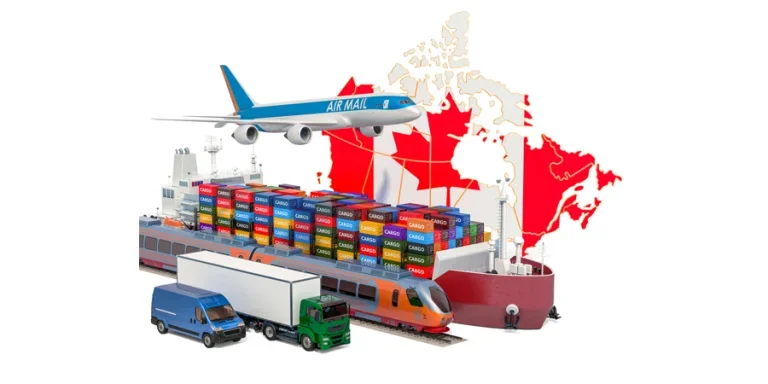Enhancing profit margins by minimizing logistics expenses is crucial for any successful business operation. However, managing these costs becomes particularly challenging when dealing with international importation of goods due to the complexities of customs regulations, import duties, and taxes.
For brands intending to import merchandise into the United States, optimizing your ecommerce supply chain for cost savings is possible by staying informed about and compliant with the regulations of the US Customs and Border Protection (CBP).
A notable regulation from the CBP that ecommerce businesses frequently leverage is Section 321. This regulation permits shipments of low-value goods to circumvent taxes and duties, significantly lowering the price of importing goods into the US. Section 321 speeds up border crossings and eliminates the import duties and tariffs typically associated with imported goods. When a customer places an order, it’s picked, packed, and shipped — tax and duty-free — back into the U.S.
The article below explains in more detail how the entire process works and outlines the options available to merchants, helping you navigate the complexities of cross-border shipping and make the most of these regulatory advantages.
What is Section 321 and its Benefits?
Section 321 is a designation by the Customs and Border Protection (CBP) that allows goods to be imported into the United States without incurring customs taxes and duties. This provision specifically exempts shipments of low value from these charges, provided they meet the criteria set by the de minimis value threshold.
In the United States, the current de minimis value is set at $800 USD. This means that most goods valued at or below this amount can be imported without paying duties, import taxes, or tariffs. CBP tracks shipments that qualify for Section 321 through two programs: the Data Pilot, which collects data on the supply chain partners involved in the shipments, and Entry 86, which implements an automated broker interface for processing these shipments.
Key Benefits of Section 321
- Cost Reductions Section 321 allows ecommerce businesses to manufacture products overseas and import them into Canada and ship them to the US duty and tax-free. For instance, if you manufacture items in China, your shipment may qualify for exemption from Section 301 tariffs, leading to significant cost savings.
- Faster Shipping While proof of value is required, Section 321 reduces the paperwork needed to import products and obtain clearance, streamlining the shipping process and minimizing delays caused by customs holds. Additionally, by shipping from Canada instead of other countries, merchants can take advantage of Section 321 to realize faster transit times.
- Increased Market Competitiveness Reducing or eliminating duties paid enables merchants to enter the US market more affordably and offer better shipping rates to US-based customers. By bulk shipping products to a 3PL’s fulfillment center in the Canada, you can ship products domestically to US customers, cutting down on shipping costs and last-mile delivery times.
Businesses can take advantage of Section 321 for a wide range of products, but certain goods are restricted. The restricted or regulated list of goods includes: Cigarettes, cigars, alcoholic beverages, harsh chemicals, products under government regulation, products that require inspection and goods that are subject to countervailing or anti-dumping duties.
What is Section 301 and Its Relation to Section 321?
Section 301 of the Trade Act of 1974 grants the US government the authority to enforce trade agreements, address unfair foreign trade practices, and impose tariffs and other trade restrictions. This section has been used to impose tariffs on certain goods from countries like China, impacting the cost structure for many importers.
The relationship between Section 301 and Section 321 lies in their impact on import costs. While Section 301 can increase prices through tariffs, Section 321 offers a way to mitigate these costs by allowing duty-free entry for low-value shipments. Merchants can strategically use Section 321 to import goods that might otherwise be subject to high tariffs under Section 301, provided the shipments meet the value threshold.
Recently, the US government has being increasing tariffs on goods imported from China under Section 301. In 2024, it’s estimated that 60% of the goods imported from China have a 25% import tariff or greater, thus, increasing the demand to buy goods from other countries or finding alternative ways, like Section 321, to mitigate the tax impact.
Canadian Import Fees
When importing goods into Canada, merchants are subject to various import duties and tariffs specific to Canada, depending on the type of goods and their country of origin. The Canada Border Services Agency (CBSA) administers these duties, which can include:
- Customs duties: Based on the Harmonized System (HS) classification of the goods.
- Goods and Services Tax (GST): Typically 5% on most goods.
- Excise duties: Applied to specific products like alcohol and tobacco.
- Provincial sales taxes (PST) or Harmonized Sales Tax (HST): Depending on the destination province.
Understanding these costs is crucial for merchants to accurately calculate the total cost of importing goods into Canada even if you the merchant plans to sell these goods to US customers.
Qualifying for a Duty Drawback for Your Ecommerce Shipments
Merchants who sell goods cross-border can recoup some or all the import duties paid when the goods are moved across the border again, whether that is because they are returned, or they are continuing to their final destination. This is referred to as a duty drawback.
A duty drawback is a refund of customs duties paid on imported goods that are subsequently exported. To qualify for a duty drawback, merchants must meet specific criteria, such as:
- The goods must be exported within a certain time frame after importation (usually within four years).
- Detailed records of the importation and exportation must be maintained.
- The goods must remain in the same condition as when imported or undergo specific manufacturing processes.
By qualifying for a duty drawback, merchants can recover a significant portion of their import costs, enhancing their profitability when selling goods in the US.
Applying for a Duty Drawback
If you are a merchant with an international shipping strategy that includes Section 321 and you are eligible for duty drawback, you must go through the application process with the Canadian Border Service Agency (CBSA).
Applying for a duty drawback involves several steps:
- Determine Eligibility: Confirm that your goods and transactions meet the criteria for a duty drawback.
- Maintain Records: Keep comprehensive records of all import and export activities, including shipping documents, invoices, and proof of export.
- Submit an Application: File a drawback claim with the CBSA. This typically includes providing detailed documentation of the import and export transactions.
- Claim Refund: Once approved, the drawback amount will be refunded, reducing the overall cost of doing business.
To start a drawback claim, you need to complete and submit Form K32-Drawback Claim. This form requires proof of export, especially if the exports are affected by CUSMA. Instructions for completing the form and details about satisfactory evidence (explained in D7-4-3) are included with the form.
Submit the completed K32 with supporting documentation to the nearest CBSA office. You must file the claim within four years of the goods’ release date. Before submitting, the goods must be exported or considered “deemed exported” as explained in Subsection 89(3) of the Customs Tariff.
Consulting with a customs broker or trade specialist can help ensure that your application is complete and accurate, expediting the refund process.
Temporary Importation of Goods into Canada
Merchants can also consider applying for temporary importation of goods into Canada under specific conditions. This allows goods to enter Canada without paying duties and taxes, as long as they are exported within a certain period. This option is particularly useful for goods intended for immediate export to the US.
If the merchant is solely selling their goods to US customers and receiving an import duties exemption, they do not need to apply for duty drawbacks. Learn more about the temporary importation (Memorandum D8-1-1) on the CBSA website.
Key points for temporary importation include:
- Tariff Item No. 9993.00.00: The provision under which temporary imports are allowed.
- Time Limit: Goods must be exported within a set period, typically up to 18 months.
- Security Deposit: A refundable security deposit may be required to cover potential duties and taxes.
Temporary importation helps merchants manage cash flow and reduce upfront costs when dealing with goods that will not permanently remain in Canada.
By understanding and leveraging these various regulatory provisions, merchants can optimize their cross-border operations, reduce costs, and effectively sell goods in the US market.
How a 3PL Can Enhance Your Section 321 Strategy for US Ecommerce from Canada
Leveraging a third-party logistics provider (3PL) can significantly enhance a Section 321 strategy for merchants importing into Canada and selling direct-to-consumer in the US.
A 3PL can manage the complexities of exporting, ensuring that shipments valued at $800 or less enter the United States duty-free under Section 321 regulations. 3PLs can provide in-house expertise, handling all aspects of the supply chain, from warehousing and inventory management to order fulfillment and shipping
Additionally, a 3PL can help the merchants navigate the complexities of cross-border shipping, including duty drawbacks. This support allows businesses to focus on growth and customer satisfaction while maintaining compliance with US Customs and Border Protection regulations when shipping goods from Canada to the US.
Source from DCL Logistics
Disclaimer: The information set forth above is provided by dclcorp.com independently of Alibaba.com. Alibaba.com makes no representation and warranties as to the quality and reliability of the seller and products.




